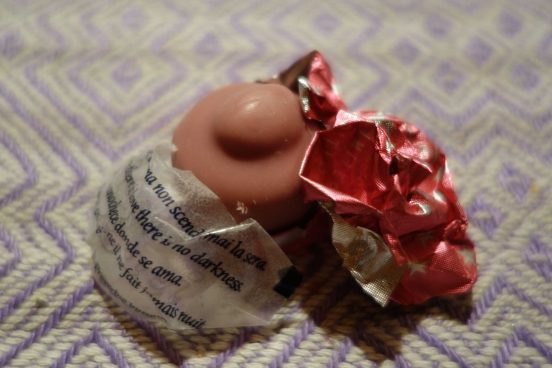Chocolate may be the most misunderstood of democratized luxuries. Some of the recent innovation, especially with “Ruby Cacao,” in this market is interesting, but also points to that problem.
“Blonde” Chocolate
Valrhona had, a while back, introduced their own new kind of chocolate in the form of the “blonde” chocolate they named “Dulcey.”
This is basically, and also in terms of how it’s being labeled, a white chocolate. However, it is not entirely that but rather caramelized, to give it the darker “blonde” color and deeper flavor.
Here, at least, there is a description of how it came about from a mistake, having “left some white chocolate in the double-boiler for too long,” followed by years of development and refinement.
The marketing describes it as special, as marketing should, but doesn’t go overboard with it.
“Ruby” Chocolate
The story of the “Ruby cocoa bean” and Ruby chocolate is a rather different one.
Its inventor and maker, Barry Callebaut (a company that is a major manufacturer of cacao products) has hailed Ruby as “the fourth type in chocolate” after dark, milk, and white.
This would be all well and good.
But, they describe it as being produced from “the Ruby cocoa bean” in a way that makes it sound as if they had found or created a pink cacao variety.
Cacao Varieties
The cacao plant comes in three different varieties, the Criollo, Forastero, and Trinitario.
Or rather, this is how it is commonly classified, even as it looks like we would really need a new system of classification, because the actual diversity is rather different.
The “Ruby” does not seem to come from any special variety, however. Rather, a special manufacturing process without the fermentation that gives cacao its typical notes (and dark brown color) seems to be employed.
The color certainly is special and the flavor interesting at the very least in how different from (other) chocolate it is; rather than the woody notes of a good dark or the buttery ones of a white one, Ruby chocolate is flowery, tart, and berry-like – if that’s how you want to describe it.

Ruby KitKat
The Guardian taste-tested the Ruby Red KitKat, which was the first product using Ruby cocoa that was widely available, and the overall verdict was negative…
I had some of that and would concur with the critics. It is somewhat interesting to try, but the tart-sweet notes don’t even fit something as sweet as a KitKat too well.
Fazer Pure Ruby
Finnish Fazer has also produced a Fazer Pure Ruby bar in a limited edition… which has always sold out much too fast.
It is certainly an interesting color for “millennial pink” Instagram posts, but that is as far as it really goes…

Baci Ruby Limited Edition
By chance, I also encountered a limited edition version of Perugina’s classic Italian Baci (Kisses) “made with natural Ruby cocoa beans.”
For their whole theme of love and kisses, the pink fits. For the hazelnut filling, though, not so much…
The Problem
The problem I am having with it all – which The Chocolate Journalist also points out in her great article digging deep into Ruby chocolate – is that it does not help with this issue:
There is a lot of fine and diverse kinds of cacao to be discovered. They are used in various bars, oftentimes produced with great regard for the cacao growers and the environment.
To discover those, we need to be willing to go beyond superficiality, though, to dig deep into the product and its real enjoyment.

Leave a Reply
You must be logged in to post a comment.